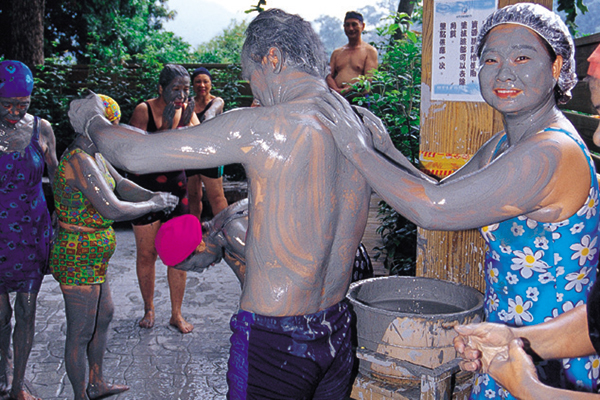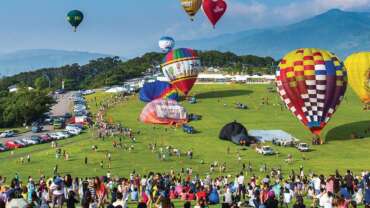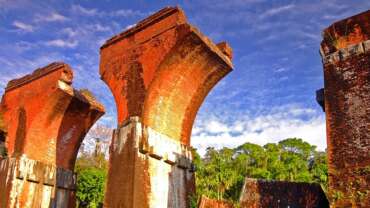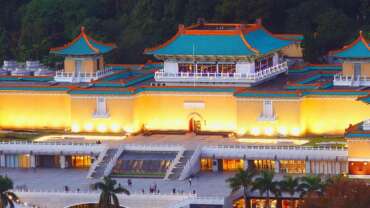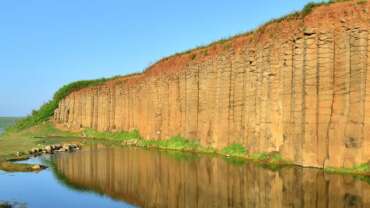Experiences in Taiwan
Ecotourism
If you want to know how beautiful Taiwan really is, you have to come and see for yourself. You will be amazed at the diversity of ancient species this beautiful and relatively young island has to offer. Come and explore its numerous mountains, forests, wetlands and oceans, and find an incredible collection of natural ecosystems.
Taiwan lies off the southeast coast of the Asian Continent, where the tropical and subtropical zones come together. Surrounded by the sea and dominated by high mountains created by tectonic action over the eons, the country features a full range of climates and terrains from the tropical to the frigid. The variations in weather, geology, and elevation give Taiwan an unparalleled richness of flora and fauna, including many endemic species that are found nowhere else in the world. Taiwan is, in fact, a northern-hemisphere microcosm and natural treasure house that, truly, must be seen to be believed.
Coastal Regions
Taiwan is surrounded by oceans and therefore has a long coastline, which offers different sceneries wherever you go. The West Coast mainly consists of sand dunes, sand beaches, sand bars and lagoons, and its straight coastline is rather monotonous. The East Coast on the contrary presents a dramatic coastline of towering cliffs that almost directly descend into the deep sea. The coastal plains here are very narrow. The rock formations at the North Coast alternate with beautiful bays and offer the most varied coastal landscape of Taiwan, while the South Coast mainly consists of coral reefs. The offshore islands of Taiwan also offer a great variety of geographical landscapes that are characteristic for the region, such as the basaltic rocks of the Penghu islands, the granite rocks of Kinmen, and the marine erosions of Matsu.
Flora and Fauna
Taiwan harbors a great diversity of organic life, and some variations are rarely found elsewhere in the world. An example is the black forest similar to that in Germany, with vegetation going back 30 to 60 million years, such as Taxus sumatrana, mangrove, Taiwan isoetes, and the rare high-altitude grass plains. The world’s oldest amphibian, the Formosan salamander, can also be found here, as well as the Formosan black bear, the Mikado pheasant and the land-locked salmon. The beautiful azalea, cherry blossom and maple leaf are also subjects of admiration. If you want to experience this diverse animal and plant life, consider a visit to one of Taiwan’s national scenic areas, national parks or forests, or nature reserves, as these form the most ideal outdoor natural resource learning opportunities in Taiwan.
Taiwan’s national parks, including Yangming Mountain (Yangmingshan), Taroko, Yu Mountain (Yushan), Shei-Pa, Kenting, Kinmen, Dongsha Atoll, and Taijiang, form the back garden of Taiwan and in themselves are natural treasure-houses. Next to beautiful sceneries, they provide the shelter to unique animal and plant life, including insects, fish, and birds. The natural reserves actually form miniature ecosystems that not only provide a protected environment but also offer a great alternative for recreational activities, environmental education and academic research. Here, visitors can get away from their hectic lives in the city and enjoy the serene environment. You can also come to Taiwan to watch its numerous species of butterflies and birds.
Butterflies
Some 17,000 different species of butterflies are known around the world; almost 400 can be seen in Taiwan, 50 of which are endemic to the island. There are many different sites where you can go to watch them dance in the air, including Doll Valley in Wulai near Taipei, Yangming Mountain (Yangmingshan) National Park, Mt. Jiaoban, and Mt.Lala along the Northern Cross-Island Highway, Qilan near Taipingshan (Ta-ping Mountain) , Guguan, Li Mountain (Lishan) , and Cuifeng along the Central Cross-Island Highway, Nanshan River and Huisun Forest near Puli, Shanlin River (Sunlinksea) in Nantou County, Butterfly Valley in Maolin near Kaohsiung County, Sheding Park and Nanren Mountain (Nanrenshan) in Kenting , and Butterfly Valley in Taitung.
Birds
Because of its warm and humid climate, Taiwan has extremely rich vegetation which attracts many birds. Located at the western edge of the Pacific Ocean, it is also a favorite resting area for migrating birds. Resident and migrating birds total some 440 species, and endemic birds such as the black-faced spoonbill and the Sterna leucoptera can be seen here. Sites for watching these migrating birds include the Guandu swamplands in the northern Taiwan, Yilan swamplands, mouth of the Exit Dadu River in the central Taiwan and Gaopin River in the southern Taiwan. Other bird-watching sites are the Penghu islands, Matsu, Wulai, Mt. Hehuan, Xitou, Ali Mountain (Alishan), Yangming Mountain (Yangmingshan) National Park, Yu Mountain (Yushan) National Park, Shei-Pa National Park, Taroko National Park, Kenting National Park, Kinmen National Park, Taijiang National Park, Northeast Coast National Scenic Area, and East Coast and the East Rift Valley National Scenic Areas.
Marine Life
As Taiwan is surrounded by oceans, marine life and other oceanic resources are abundant and diverse. The clear waters and warm climate of Kenting and Green Island, for example, provide the ideal environment for colorful and peculiarly shaped coral reefs. These not only form the architecture of the undersea world, but also provide the shelter for all kinds of tropical fish. On Wang-an Island in Penghu, as well as Lanyu in Taitung County, you can even see the green sea turtles coming to the shore to lay its eggs. Along Taiwan’s East Coast, particularly off the coast of Yilan, Hualien, and Taitung, more than 60% of all whale and dolphin species that are found in Taiwan can be spotted. You can choose to take one of the boat trips that are organized in this area. While listening to the introduction by professional whale spotters, the chance of seeing these extraordinary creatures is as high as 90%.
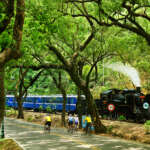
Rail Tour
Taiwan’s railways offer an endless variety of experience, and the scenery lining their routes provides an infinite range of fascinating scenery. If you want to get a close look at the island’s beauties without having to suffer the troubles of unfamiliar roads and the frustrations of traffic congestion, then you could do no better than choose a railroad tour and immerse yourself in the delights of enchanting coastlines, awesome mountains, placid farmlands, and engrossing countryside.
The history of railroads in Taiwan dates back to 1887, in the declining years of the Qing Dynasty, when court official Liu Ming-chuan started to work on a section of track in the northern part of the island. The Japanese expanded on that beginning when they occupied Taiwan from 1895 to 1945, and the round-the-island network was completed after the island was restored to Chinese rule. Today, more than a century after its small beginning, Taiwan’s convenient railway network consists of the West Coast Trunk Railway, East Coast Trunk Railway, North-Link Railway, and South-Link Railway. Passenger service is divided into four classes, offering travelers a choice depending on their destination, the urgency of their trip, and the size of their pocketbooks.
The scenery along the railroad glides by in a never-ending sequence of change, and each line has its own unique characteristics. The long, narrow, mountainous nature of the island’s terrain lines the length of the railways with exquisite scenes of mountains and rivers, and the rail passenger gains access to scenes that are out of reach of the highway. Taiwan’s railroads are far more than just a tool of transportation; they embody a deep affinity with the development of local culture and society, and have left behind large numbers of historical relics, including old stations and track sections that hark back to the past and reveal unique facets of local history.
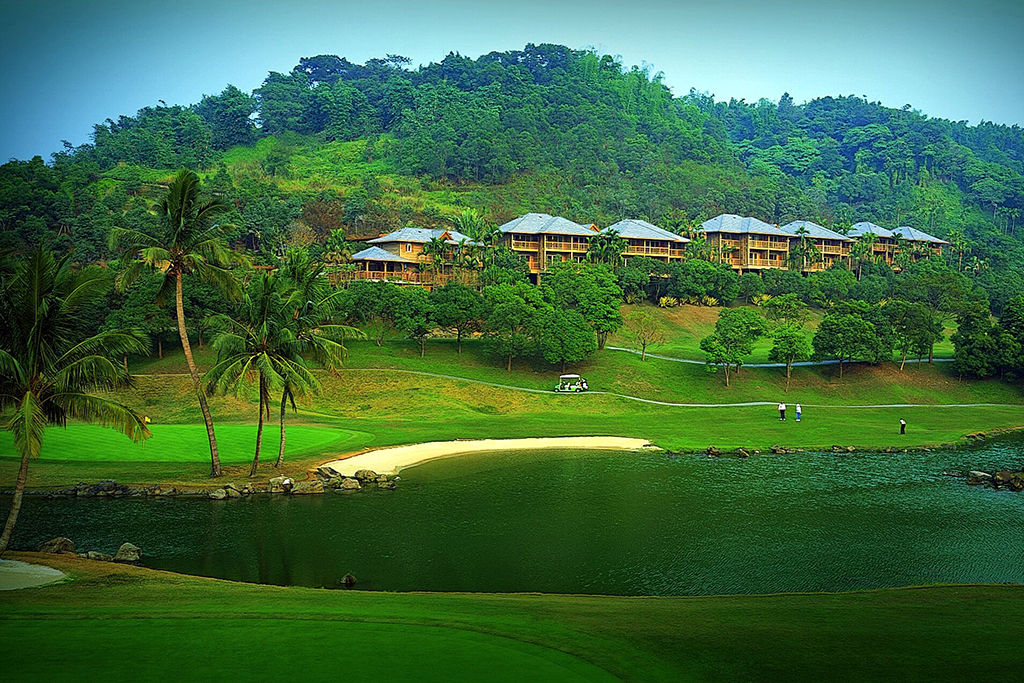
Golfing in Taiwan
With Exciting Courses, Rich Food, Unique Hot Springs and Hospitable People, Start Your Golf Journey in Taiwan!
Tea & Gourmet Golf
Taiwan is rich in agricultural products, which include a wide variety of teas and fruits. Taiwan’s teas and fruits are world famous, and some of the world’s best teas come from Taiwan. Additionally, Taiwan boasts a diverse food culture in which a variety of Chinese delicacies are combined with local snacks. Experience tea, fruit and a variety of cuisine whilst on your golfing break.
Challenging Golf
Taiwan is a mountainous island, and most of its golf courses are built on mountain slopes or hills. Mountains are a common feature of Taiwan’s golf courses. Diverse landforms enhance the pleasure of golfing. In addition, the spectacular terrain has inspired world-famous designers to create unique fairways that provide golfers with fun and excitement. Moreover, by looking down on these fairways from above, golfers can fully appreciate their beauty.
Year-round Golf
Taiwan is divided into two climatic zones by the Tropic of Cancer, which runs through Chiayi and Hualien. The north experiences a subtropical monsoon climate, and the south a tropical monsoon climate. Even in winter, the average temperature of the coldest month in northern Taiwan is above 15 degrees Celsius. Thus, the island is suitable for golfing all year round. No matter what season it is, in Taiwan, golfers can enjoy not only golfing but also numerous hot springs, the local cuisine and a variety of other tourist attractions.
Hot Spring Golf
Hot spring tourism began in Taiwan during the early part of the 20th century. Many areas boast diverse and unique hot springs. The hot spring tour routes can be combined with the golf tours. What could be better than relaxing in a hot spring after completing 18 holes of golf? Taiwan’s hot springs are something that touring golfers should not miss.
Golf in a friendly environment
The Taiwanese people have a reputation for hospitality. Most caddies in Taiwan are female. They are well-trained, experienced and patient, and provide professional services while you are golfing. Most caddies are familiar with the fairways, wind directions and terrain of the golf courses. They will be your best assistants and help you perform to your best.
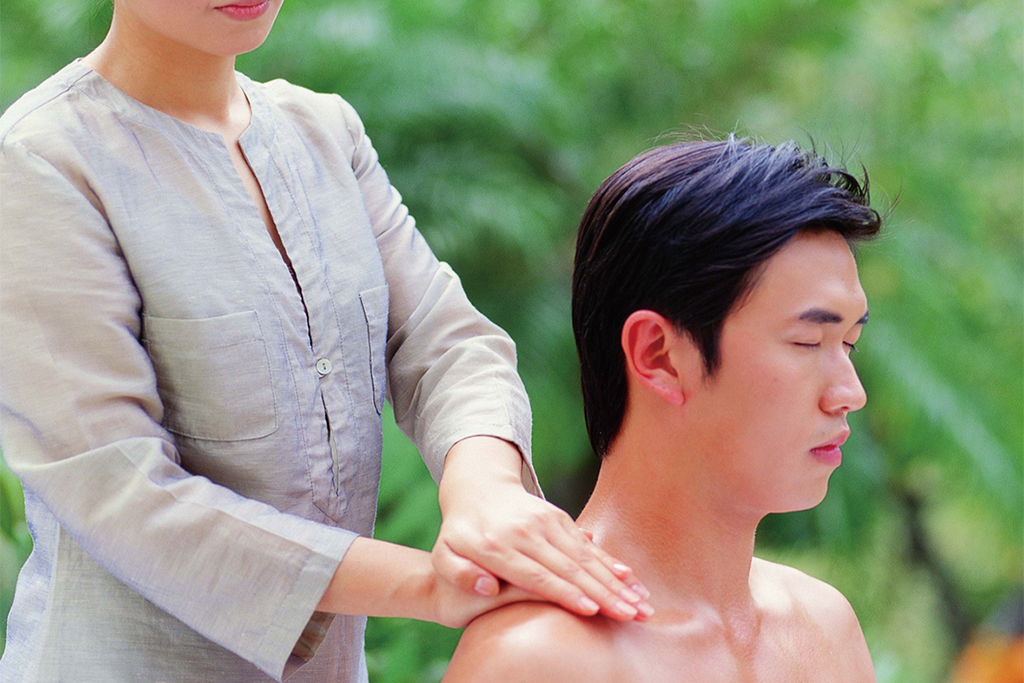
LOHAS
At a time when the “LOHAS” trend (LOHAS means “Lifestyles of Health and Sustainability”) has become popular throughout the world, Taiwan offers you an endless number of ways, with an Oriental flair and a uniquely Taiwanese character, to stay healthy. Come to Taiwan and feel “LOHAS” the Taiwanese way, in the island’s cuisines, sports, leisure activities, and traditional health care therapies.
In Taiwan, you can give your taste buds a treat and stay healthy at the same time by enjoying your fill of medicinal foods and healthful organic cuisine. If you are anxious to achieve a physical and mental balance, then you might try yoga, Zen meditation, martial arts, or Tai Chi to bring you tranquility the Oriental way. If you just want to relax a bit during your trip, then a visit to one of Taiwan’s popular spas, a soak in a hot spring bath, or a soothing cup of traditional tea might be just the thing for you. If you want to experience the Chinese medical treatment that is receiving ever more attention around the world, then Taiwan will provide you with a health-travel environment of the highest quality. This brochure introduces Taiwan’s rich variety of health-giving resources so that you can experience, in the most relaxed and natural way possible, the island’s health culture and leisure travel at the same time.
Zen Meditation
Zen meditation can revitalize you and make you feel almost reborn. You can see temples all over Taiwan, and many of them have meditation rooms that visitors can use. Some offer meditation classes, and even overnight accommodation. Many of these meditation areas are located in the mountains, surrounded by beautiful natural scenery—the perfect place for you to harmonize your body and purify your soul.
Qigong
This unique method of strengthening the body and curing illness is an ancient Chinese way to health. In general, its practice is meant to harmonize the mind, breath, and body. Qigong is supposed to free you of random thoughts, paving the way for emptying the mind and relaxing the body. Harmonizing the breath means breathing from the abdomen, and harmonizing the body means achieving a state of relaxation and tranquility whether standing, sitting, or lying down. According to the theory of Chinese medicine, people become ill because the free circulation of blood and breath is blocked, and needs to be opened up. This is what the practice of Qigong is supposed to do.
Tai Chi
Tai Chi Chuan has been proven beneficial to mental and physical health, and is achieving international popularity. It is extremely easy, and just about free, to study Tai Chi Chuan in Taiwan, with teachers giving instruction in public parks, community activity centers, and schools. Tai Chi emphasizes relaxation, and exercises every part of the body with slow and graceful movements that can improve the sense of balance, enhance cardiopulmonary function, lower blood pressure, alleviate melancholy, and strengthen the immune function. Scientific research carried out in America also shows that it consumes 280 calories an hour, making it capable of “weight reduction without sweat.”
Yoga
The fashion for yoga in Taiwan encompasses small class instruction, large yoga centers, and even vacation spots. International yoga groups have come in; True Yoga, for example, gives instruction at a 2,112-square-meter six-star facility in Taipei’s Xinyi District that is said to be the biggest yoga hall in Asia. Space Yoga also has a top-class facility in the same area. Near Hualien in the eastern part of Taiwan, the Promised Land Resort offers a yoga itinerary that emphasizes the slow life.
SPA
Taiwan offers a wide variety of spa services to fill all kinds of different needs. There is far more than just functional hydrotherapy on offer here; these services extend to cover the entire field of leisure esthetics, encompassing essential oils, aromatherapy, skin treatment, music, yoga, meditation, and everything else you need for a beautiful, relaxing, and healthful experience.
Each of Taiwan’s spas is unique, since it incorporates the resources of its particular local area. Vacation resorts are usually located in scenic spots; at Sun Moon Lake’s Lalu hotel, for example, you can enjoy a spa in the midst of splendid mountain and lake scenery. Club-type spas generally offer larger spaces and more functions, in health and leisure facilities all over Taiwan. There are also hotel spas, where you can enjoy accommodation, fine dining, leisure, and spa activities all at the same time as you replenish your energy and your spirit; an example of this is provided by the Being Spa chain, which offers services in the Tayih Landis of Tainan, Evergreen Laurel of Taipei, Splendor of Kaohsiung, Royal Zhiben , and Caesar Park in Kenting. Metropolitan type spas like the Orient Retreat and Canjune Spa go for efficiency with professional health products, hardware facilities, and massage techniques designed to produce a peaceful mood in the shortest time while protecting the skin and muscles and relaxing the body and mind.
Hot Springs
Taiwan is known for its dense of hot springs (and rare cold mineral springs as well), with more than 100 hot-spring areas all over the island. This makes Taiwan one of the best places in the world for enjoying a healthful and relaxing soak in refreshing mineral waters. These springs can generally be divided into four types of water: sodium carbonate, sodium hydrocarbonate, sulfur, and pure-water. The different types have different chemical compositions that produce different therapeutic effects. Sodium carbonate springs contain carbon dioxide which generates bubbles on the skin, providing a slight massaging function; this type of spring can be found at Xiake in western Taiwan; Bulao, Baolai, and Sichongxi in southern Taiwan; and Zhiben, Green Island (Ludao), Wenshan, Jiaoxi, and Renze in eastern Taiwan. The cold springs of Su’ao also contain this kind of water. The most representative sodium hydrocarbonate springs, which lubricate the skin, are located at Wulai, Jiaoxi, and Zhiben.
Strongly acidic sulfur springs are located in the area of Yangmingshan and Beitou. Pure-water hot springs have a less simulative, moderate therapeutic effect; the Jinshan Hot Springs are of this type. The unusual “mud” springs of Guanziling in Tainan County are salty in nature.
Acupuncture
Acupuncture has a history of several thousand years in China, and its effectiveness is widely recognized. Taiwan has a high-quality environment for this kind of treatment. Needles are inserted at acupoints to stimulate the nerves; sometimes, moxa is also burned on the acupoints to regulate physiological functions. The World Health Organization of the United Nations has determined that acupuncture is effective for a wide variety of ailments, including headache and stomachache. Since acupuncture is a medical procedure, be sure to choose a legal clinic for your needle treatment.
Foot Massage
Foot massage uses stimulation of the feet to improve blood circulation and to remove wastes and toxins from the body. The human feet can directly affect the organs, and so massaging the feet makes the whole body feel comfortable and completely relaxed.
Naprapathy
Naprapathy, or manipulation massage, is a passive exercise type of treatment that involves the use of the practitioner’s hands and arms to apply pressure to acupoints throughout the body with a variety of motions. It is used for treating ailments such as headache, neck pain, and algomenorrhea, and can aid the circulation of energy, enliven the joints, adjust cardiopulmonary function, and strengthen resistance—all making you feel relaxed and comfortable.
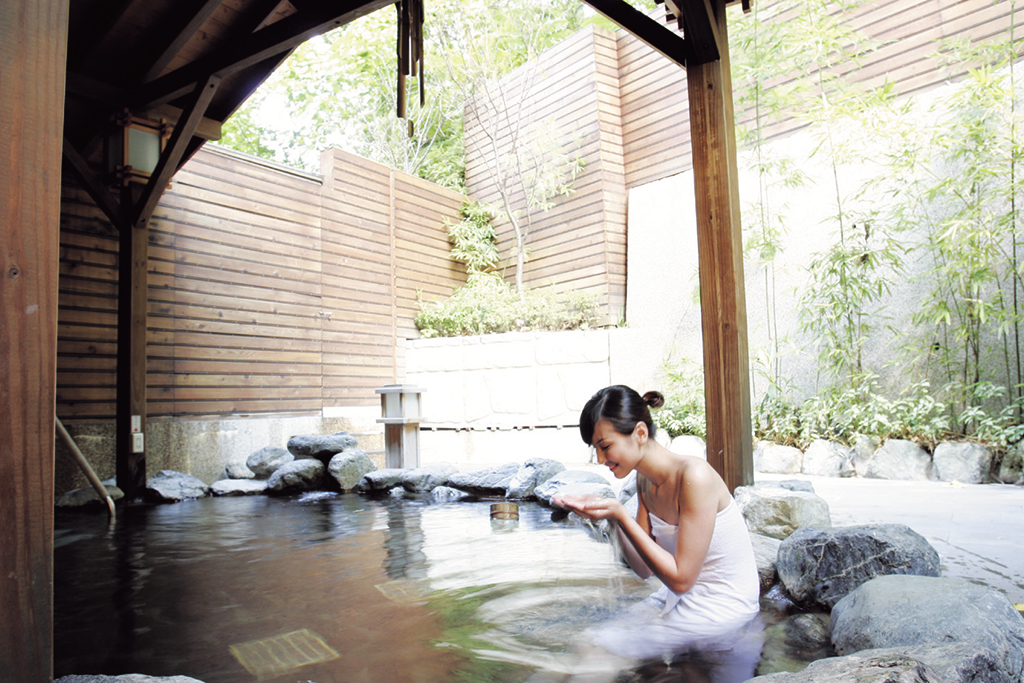
Hot Springs
Hot springs, the hot tears of the earth, are one of the most precious gifts that the earth has given to us. Ever since the ancient times, people have recognized the rejuvenating and therapeutic properties of these natural resources. Taiwan is ranked among the world’s top 15 hot spring sites, harboring a great variety of springs, including hot springs, cold springs, mud springs, and seabed hot springs. The island can proudly regard itself as one of the regions with the highest concentration and greatest variety of hot springs in the world.
Hot springs are formed by natural waters that emerge from the bowels of the earth and that possess therapeutic properties said to have a positive effect on disorders of the nervous and digestive systems, the circulation, and the organs. People have used hot springs to keep in good health for ages. In Taiwan, with its peculiar crustal structure and location on the fault line where the Euro-Asian and Philippine continental plates meet in the Circum-Pacific seismic zone, subterranean heat is spread across the island producing hot springs island-wide. With the exception of Changhua, Yunlin and Penghu counties, almost every city and county in Taiwan can find hot springs, and so it is well to see that by some tourists name Taiwan “the Hot Spring Kingdom”.
More than one hundred hot springs have been discovered in Taiwan, located in different geological areas including plains, mountains, valleys, and oceans. The highest concentration of hot springs can be found in the northern Taiwan, where the Datun (Tatun) Volcano is located, while along both sides of the central mountain range, covering an area that to the north is bordered by Yilan and to the south by Pingtung, the largest number of hot springs can be found. Hot springs found here make up more than 80% of all hot springs in Taiwan.
As hot springs generally come from deep below the surface of the earth, when they emerge they bring along a high concentration and great variety of minerals that are mostly foreign to the human body and benefit our general health. Specific properties of hot springs vary depending on chemical composition, mineral concentration and water temperature. Taiwan has a great variety of springs, both cold and hot.
The German Quely first discovered the Beitou hot springs in 1894, and when the Japanese occupied Taiwan, they brought with them their rich culture of spring soaking which greatly influenced Taiwan. In March 1896, Hirado Gengo from Osaka, Japan opened Taiwan’s first hot spring hotel, called Tenguan. This not only heralded a new era of hot spring bathing in Beitou, but also paved the way for a whole new hot spring culture. The four most famous hot springs during the Japanese occupation were Beitou, Yangming Mountain (Yangmingshan), Guanziling and Sichong River. However, after 1945 the hot spring culture in Taiwan gradually lost momentum, and only in 1999 did the authorities again started a large-scale promotion of Taiwan’s hot springs, initiating a comeback of the hot spring culture and setting off a new hot spring fever.
While in the past hot springs mainly had a recreational function, present development and usage of Taiwan’s hot springs not only focuses on the traditional aspect of soaking, but also includes health benefits as a major drawing point of hot springs. Modern applications of hot springs include hydrotherapy, spring pools, spring saunas, spring massage pools, health bathing houses, and spring health centers. Many enterprises have invested in the construction or renovation of spring hotels, and have even purchased modern scientific hot spring equipments, transforming the traditional concept of hot spring soaking into the added-value concept of hot spring hydrotherapy. Now, while enjoying the traditional comfort of soaking in a hot spring, people can receive additional health benefits by taking advantage of the physical properties of water using hydro jets that splash columns of water onto the body, ultra-sonic massage equipment, and the water’s natural buoyancy, made possible through the installation of modern equipment and the professional assistance of hot spring hydro therapists.
Because most of Taiwan’s hot springs are located in beautiful scenic areas, when going to soak in one of the numerous hot springs you will not only be able to get away from hectic life in the city but will also be given the opportunity to enjoy gorgeous scenery while listening to the voices of nature, thus adding a new dimension to recreation and health. Therefore, coming to Taiwan on a hot spring tour will definitely pay off!
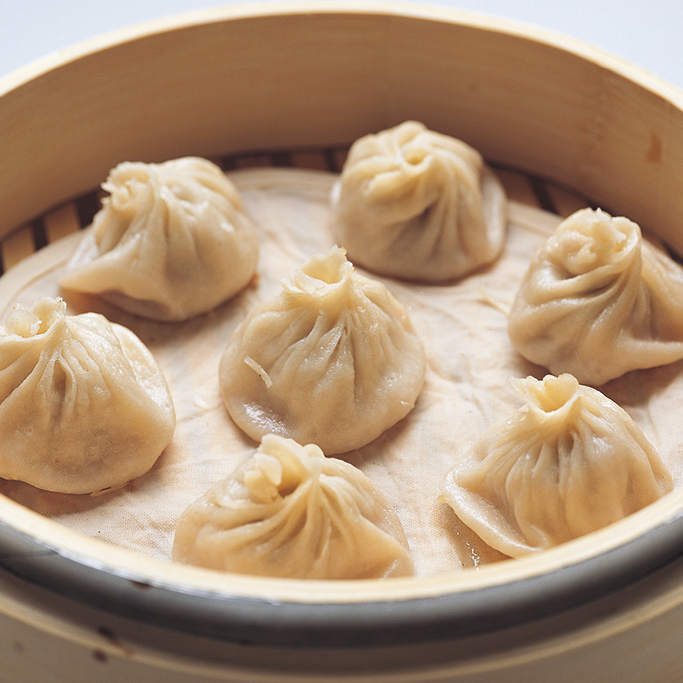
Gourmet Guide
Chinese cuisine goes back to ancient times and achieves its present level of excellence through the accumulation of thousands of years of practical knowledge and experience in cookery. Emphasis is placed on the perfect combination of color, aroma, flavor, and appearance, through which the most common ingredients are transformed into culinary tours de force. In Taiwan, cooking techniques from all areas of China have fused; the Taiwanese have not only mastered the traditional local Chinese specialties, but have also used traditional techniques to develop new culinary treats. These features attract many tourists to Taiwan every year to savor these Chinese specialties, ranging from small steamed buns to boiled dumplings.
Traditional Chinese food to be found all over Taiwan, next to Taiwanese and Hakka-style dishes, mainly including dishes from Fujian, Guangdong, Jiangzhe, Shanghai, Hunan, Sichuan, and Beijing.
Following are descriptions of the characteristics and different cooking styles of dishes from different regions:
Taiwan: Natural original flavors are preserved and the main focus is on light-seasoned, fresh, and simply flavored dishes. Thanks to Dutch and Japanese influences, raw and slightly water-scalded food is widely accepted.
Fujian: Dominated by seafood, preferably steamed, mainly light-seasoned, with sweet and sour flavorings.
Guangdong: Great variety of ingredients, focus on light-seasoned, fresh, smooth, sweet, tasty, and tender dishes. The main methods of food preparation consist of frying, baking, stir-frying, steaming, and boiling.
Jiangzhe: Focus on original flavors, with methods of preparation consisting mainly of stewing, braising, steaming, and stir-frying, for all of which temperature control is the most important aspect. Flavors are light but do not lack taste, and bones are removed while keeping shapes intact.
Shanghai: Dishes breathing international fame originate here. Local flavors are adhered to and dishes are mostly oily, drowning in sauce and brightly colored.
Hunan: Sour, hot, and rich flavors are the secrets behind the popular dishes from this area, with a well-known specialty being smoked bacon. Dishes from Hunan and Sichuan show some similarities, with many dishes being spicy because of the use of large amounts of red pepper.
Sichuan: Famous for its spicy-flavored dishes as dried and fresh red pepper is used during preparation; fish and other seafood is favored. Sichuan cuisine is extremely popular among those who favor strongly-flavored food.
Beijing: A combination of flavors from all corners, magnificently and delicately prepared; dishes combine color, shape, flavor, and nutrition, and are mostly light and tender.
Hakka: Dried and preserved materials form important ingredients in the Hakka kitchen; dishes are mostly strongly flavored (burnt, flavored, well-done, salty, fat).



